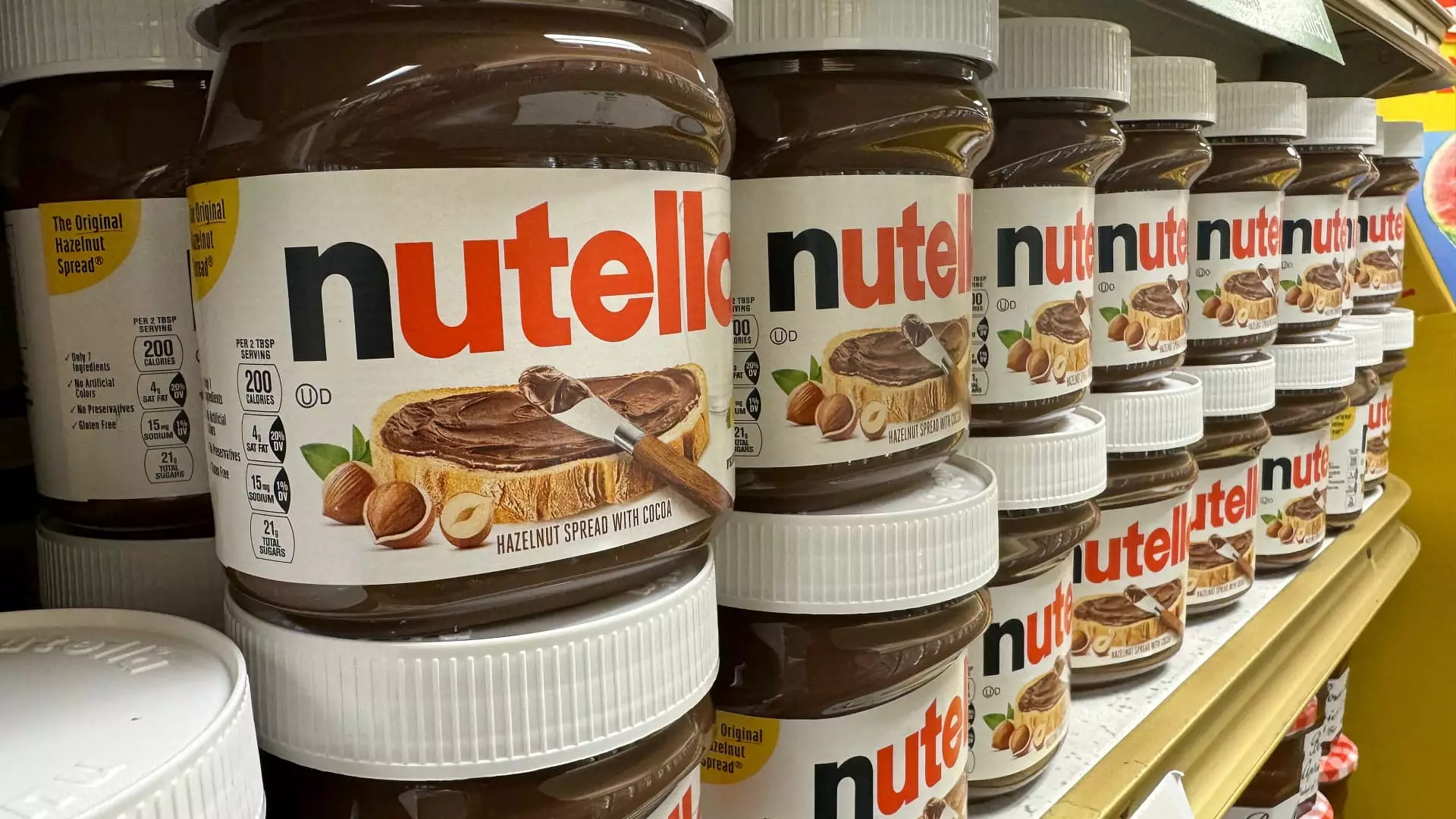Ferrero North America is boldly trying to reshape its product lineup in a strategic bid to captivate the rapidly evolving tastes of American consumers. By introducing variations such as Nutella with peanuts, transforming Ferrero Rocher from delicate spheres into practical squares, and even experimenting with unconventional flavors like Dr Pepper for Tic Tacs, Ferrero is illustrating a commitment to innovation that cannot be overlooked. These audacious decisions are not merely cosmetic; they signify a deeper understanding of the preferences that drive the U.S. market, as the company visibly seeks not just to participate, but to dominate.
What stands out is Ferrero’s decision to integrate elements that resonate with a wide range of American consumers. The introduction of Nutella Peanut displays a keen awareness of current taste trends focused on nut-based flavors and versatility, showing their intent to make the beloved spread more diverse. Each innovation signifies a bridge between Ferrero’s European roots and American consumer preferences, depicting a hybridization of taste profiles that could captivate a broader audience.
Strategic Acquisitions and Growing Market Share
The company’s dynamic growth trajectory in the U.S. candy market cannot be overstated. Having expanded its portfolio through formidable acquisitions—including Fannie May and Nestle’s candy business—Ferrero has rapidly climbed to become the third-largest candy manufacturer in the United States. Even with this impressive status, they find themselves lagging behind industry giants Hershey and Mars. The company holds just a 2% share of the U.S. chocolate market, which starkly highlights the challenges they face despite the favorable growth seen in recent years.
Michael Lindsey, Ferrero’s president and chief business officer, acknowledges these hurdles with candor. His assertion that the U.S. market is the most critical emphasizes their focus and intent to innovate aggressively. However, it’s essential to question whether these changes are enough to significantly close the gap with established brands. Will the American consumer embrace the novelty of these transformations, or are patterns of loyalty too deeply ingrained to make headway?
Localizing Supply Chains for a Global Strategy
In an astute move likely to pay dividends, Ferrero is also focusing on localizing the supply chain to boost manufacturing efficiency and sustainability. The decision to source hazelnuts from Oregon is indicative of a larger trend in the food industry moving towards local inputs. This approach not only streamlines logistics but can also enhance the allure of products as they boast “locally sourced” ingredients.
This move further reflects a broader corporate responsibility to adapt to changing economic landscapes, particularly in light of fluctuating tariffs that have put pressure on many companies. Lindsey’s assertion that this strategy was already in motion prior to the advent of such tariffs exemplifies forward-thinking and may well serve to consolidate Ferrero’s position further amidst rising prices in raw ingredients.
Investment in Large-Scale Marketing Campaigns
As part of a comprehensive strategy to revitalize brand visibility, Ferrero plans to launch expansive marketing campaigns that target high-profile events like the Super Bowl and World Cup. This decision comes at a time when other confectionery brands are reevaluating their strategies amid fluctuating sales metrics. The audacity of Ferrero’s marketing push could serve to elevate public awareness and generate significant engagement, necessary for a brand aiming to position itself as a household name in American candy culture.
The scale of the proposed marketing endeavor signals a bold bet on both consumer responsiveness and the efficacy of large-scale advertising. Yet, one must ponder—does the contemporary consumer still respond favorably to traditional marketing channels? Will casting a wide net in such competitive arenas yield worthwhile returns, or will it only serve to saturate an already volatile market?
American Adaptations and Social Impact
Ultimately, Ferrero’s rebranding reflects a changing landscape in consumer expectations. The company’s psychological pivot towards adapting classical concepts into distinctly American versions is more than just a business strategy; it’s a commentary on globalization and local taste. This culturally resonant approach has the potential to foster consumer loyalty and elevate the brand, but it also raises ethical questions about authenticity in multinational branding.
American consumers crave novelty but also have a strong desire for authenticity. The challenge for Ferrero lies in striking a balance that caters to diverse preferences while still maintaining the core identity of its beloved brands. In an age of increased scrutiny over corporate practices, it becomes essential for Ferrero to project an image that goes beyond just a business strategy, but also aligns with evolving social values and consumer ethics.
In essence, Ferrero’s latest endeavors encapsulate a fervent blend of creativity, strategic adaptation, and cultural relevance—proving that even in an age dominated by brand loyalty, innovation can pave the way for success. Will Ferrero emerge as a model of modern entrepreneurship in the candy space? The next few years will certainly reveal whether these bold moves can yield the desired outcomes in an ever-changing consumer environment.

Leave a Reply